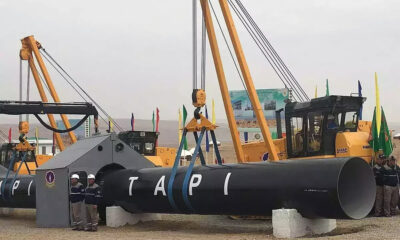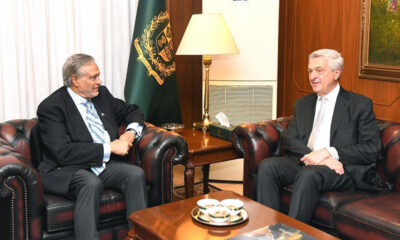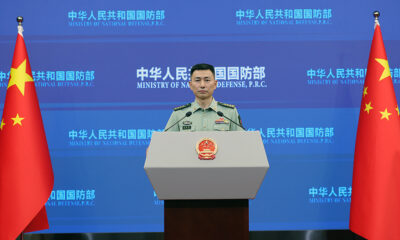Opinion
OPINION: The awful truth about growing up in Afghanistan
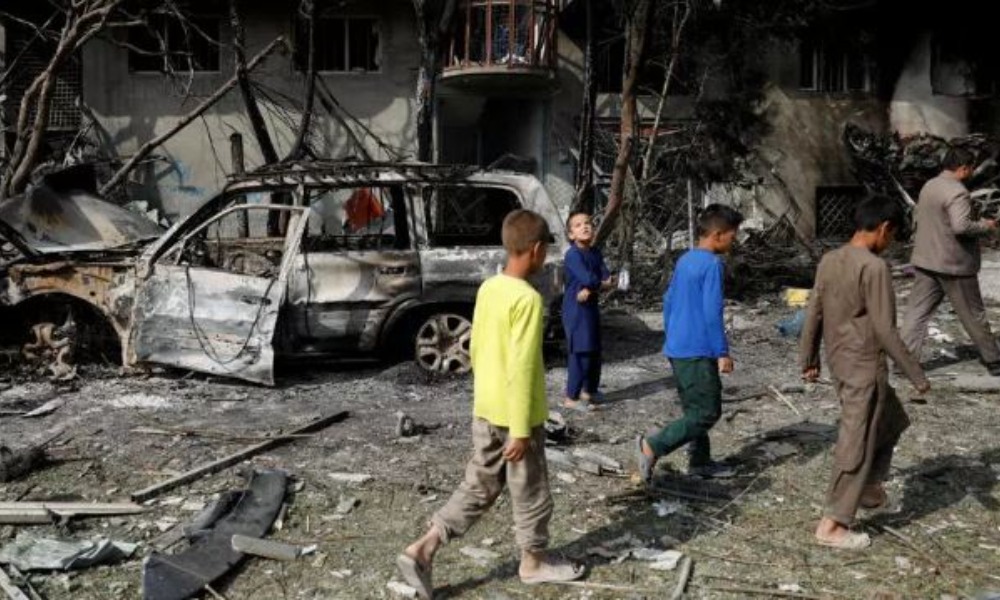
On a Saturday afternoon in late October, a suicide bomber tried to enter an education centre in Kabul. Prevented from doing so by security guards, the attacker entered a nearby lane and set off the explosives. At least 24 people were killed including schoolchildren. Many more were injured.
A colleague’s daughter survived the attack, but many more parents are still in mourning.
In the same month, an airstrike in the north-east of the country hit a school, reportedly killing at least 12 children. Insurgents were the intended target. Cold comfort for the grieving parents whose loved ones were killed in an act of fire and fury.
Attacks like this, that violate the laws of war, that directly impact children, are far too common in Afghanistan. If they occurred in the western world there would be widespread condemnation. Sadly, they often go under-reported as a result of competing global news stories, such as the COVID19 pandemic and the US Presidential election.
As the UN revealed in its latest report on the civilian cost of the Afghan war, nearly 1,900 children were killed or maimed in the first nine months of 2020.
This is truly shocking.
A 14-year-old Afghan girl told us, “When fighting breaks out, no place is safe in our village, but home is still better than outside. We hide in the corners of rooms.”
The awful truth is that every child in Afghanistan today has grown up in conflict.
The escalation in violence has hindered the education of children, too. The Global Coalition to Protect Education under Attack recorded more than 300 attacks on schools between 2017 and 2019, which injured or killed at least 410 students and teachers.
Even before the COVID19 pandemic, an estimated 3.7 million children, almost half of all primary school aged children, were out of school.
The impact of this on children is severe.
Lack of access to education leads to an increased risk of abuse and exploitation. And we know that in Afghanistan 93 per cent of late primary school-aged children are not proficient in reading. For 15 to 24-year-olds literary is 65 per cent.
The nation’s under-investment in education, presently 78 per cent less than the average for the South Asia region will have profound impact for years to come, but especially for girls.
Educated girls are crucial to the lasting peace of a conflict-affected country like Afghanistan. We know from experience that educated girls experience improved health and nutrition and contribute to better economic performance and growth.
We’re extremely concerned that 60 per cent of school-age children missing out on their education are girls. This would not be tolerated in the UK, the US or Australia, so why is it acceptable in Afghanistan?
And now the country has to cope with the COVID19 pandemic. In a country where the dilapidated health system has also been attacked, where doctors and nurses have been killed too.
All this in a country where nearly 50 per cent of the population, 18.4 million people, will need humanitarian assistance this year. Where 5.5 million people could soon experience famine conditions and 3 million children under the age of five suffer from under-nutrition, according to the UN.
Little wonder that Afghanistan is one of the worst places in the world to be a child.
It therefore beggars belief that despite a dramatic rise in humanitarian need, international aid to Afghanistan has tumbled. Donors have gradually funded less and less of the UN’s annual pleas for humanitarian support, from 87.5% in 2016 to 76% in 2019. This year’s appeal has so far only received a pitiful 40% of what is needed.
That’s why in the upcoming day Afghanistan donor conference in Geneva is crucially important.
At this conference, which takes places as nascent peace talks offer cautious hope for a political settlement to the war, the international community must deliver increased funding for education, especially for girls, as well as protect the interests of people with disabilities and other vulnerable groups.
There must be increased spending on public health to dramatically improve life-expectancy outcomes of children, many of whom are having to live with life-altering injuries due to being caught up in the conflict.
The international community must work with the government of Afghanistan to ensure national laws related to the protection of children are fully resourced and rolled out nationwide. And it must continue work to help secure an enduring peace settlement so that future generations of children grow up free from the fear of violence and death.
This and more must be our commitment to a nation whose people have endured decades of hardship, conflict and violence. Indeed, it is vital so that a country racked by decades of fighting and division is able to forge a better future for all its citizens.
Written by Chris Nyamandi, Save the Children’s Country Director for Afghanistan

Opinion
Did the US just get lured into war with the Houthis?
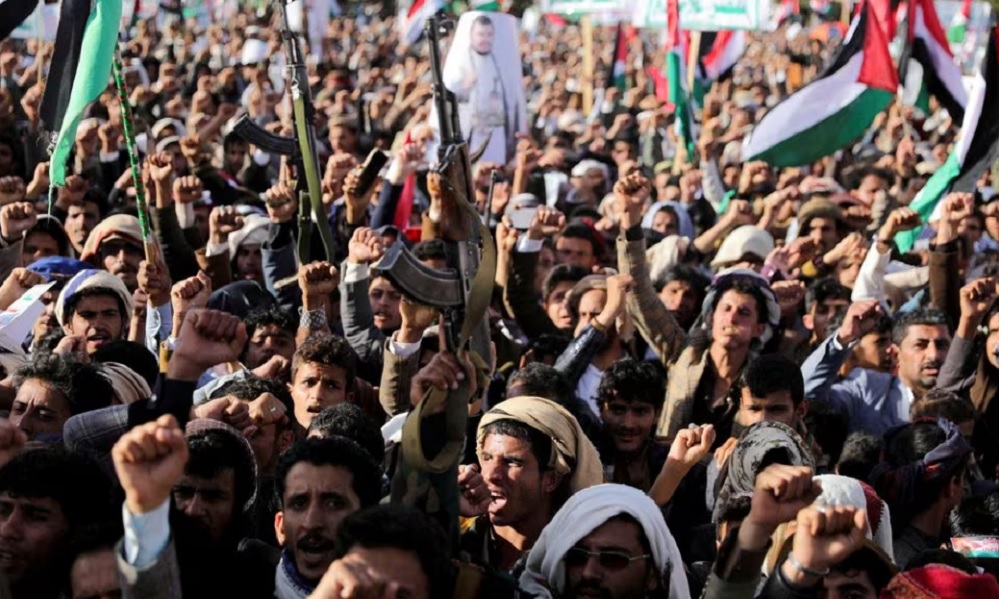
U.S. President Joe Biden’s blistering strikes on Yemen followed weeks of warnings to the Houthis to stop attacking Red Sea shipping – or else.
Yet the Houthis continued firing drones and missiles, seemingly goading the United States to follow through on its threats. That has raised a question for some experts: Did the Houthis want a war with America? And if so, why?
Gerald Feierstein, a former U.S. ambassador to Yemen, is among those who think the United States has given the Houthis exactly what they wanted: a fight.
“Absolutely they have been trying to provoke U.S. retaliation,” Feierstein told Reuters.
“They’ve been confident that they could withstand whatever we were going to do. They have seen they win popular support.”
The Houthis, who have controlled most of Yemen for nearly a decade, said five fighters had been killed in a total of 73 air strikes. They vowed to retaliate and continue their attacks on shipping, which they say are intended to support Palestinians against Israel, a popular cause in Yemen.
The U.S. military said late on Friday it had launched another strike targeting a radar site.
After the initial U.S. and British strikes, drone footage on the Houthis’ al-Masirah TV showed hundreds of thousands of people in Sanaa chanting slogans denouncing Israel and the United States. Crowds gathered in other Yemeni cities as well.
Experts say much of the Houthi confidence comes from having resisted years of attacks from Saudi Arabia. But a U.S.-led campaign against the group could be very different.
U.S. Lieutenant General Douglas Sims, the director of the Joint Staff, told reporters on Thursday that the strikes hit 28 locations with more than 150 munitions. Reviewing the damage, he said he hoped the Houthis would not invite that kind of destruction.
“My guess is if you were operating a ballistic missile launcher last night, you certainly didn’t want the strike. But, no, I would hope they didn’t want us to strike,” Sims said.
MOUNTAIN FIGHTERS
In pre-recorded speeches and sermons, Abdul Malik al-Houthi, the enigmatic leader of Yemen’s Houthi fighters, asserts that his movement is under siege because of its religion.
Al-Houthi established a reputation as a fierce battlefield commander before emerging as head of the Houthi movement, mountain fighters who have been battling a Saudi-led military coalition since 2015 in a conflict that has killed tens of thousands, devastated Yemen’s economy and left millions hungry.
Under the direction of al-Houthi, who is in his 40s, the group has acquired tens of thousands of fighters and a huge arsenal of armed drones and ballistic missiles, largely supplied by Iran.
Following the strikes, Sims and other U.S. officials acknowledged that the Houthis would probably make good on their threats to retaliate.
On Friday, the Houthis fired an anti-ship ballistic missile into the Red Sea, the Pentagon said.
A U.S. official, speaking on the condition of anonymity, said far from being deterred, the Houthis might see the likely low death toll among their fighters in the strikes as a success for the group, even if their capabilities have been degraded.
“Someone’s definition of success really depends on their perspective,” the official said.
With tensions soaring, the price of Brent crude oil rose 1% on Friday on concern that supplies could be disrupted. Commercial ship tracking data showed at least nine oil tankers stopping or diverting from the Red Sea.
MORE STRIKES?
Michael Mulroy, a former deputy assistant secretary of defense for the Middle East under the Trump administration, said the Pentagon should prepare for additional military action.
“The U.S. should start planning to increase our response to further attacks in the Red Sea or Syria and Iraq,” he said.
“And Iran’s IRGC should be included in those targets,” he added, using an acronym for Iran’s Revolutionary Guard Corps.
Iran champions the Houthis as part of its regional “axis of resistance” – a collection of Iran-backed groups that includes Palestinian militant group Hamas and militia in Iraq and Syria.
The United States accuses Iran of enabling the Houthi Red Sea attacks, providing the military capabilities and intelligence to carry them out.
The Houthis deny being puppets of Tehran and say they are fighting a corrupt system and regional aggression.
Still, Feierstein cautions that the Houthi defiance of the United States and its allies helps burnish their brand in the Middle East, a concern shared by some current U.S. officials.
“Regionally, it raises the Houthi profile. It puts them in the first rank of Iranian affiliates in the ‘Axis of Resistance,'” Feierstein said.
“We shouldn’t give the Houthis what they want, which is exactly what we did.”
Analysis by Reuters staff Phil Stewart and Idrees Ali
Opinion
OPED: Is the West’s conscience being overshadowed by its political ego?
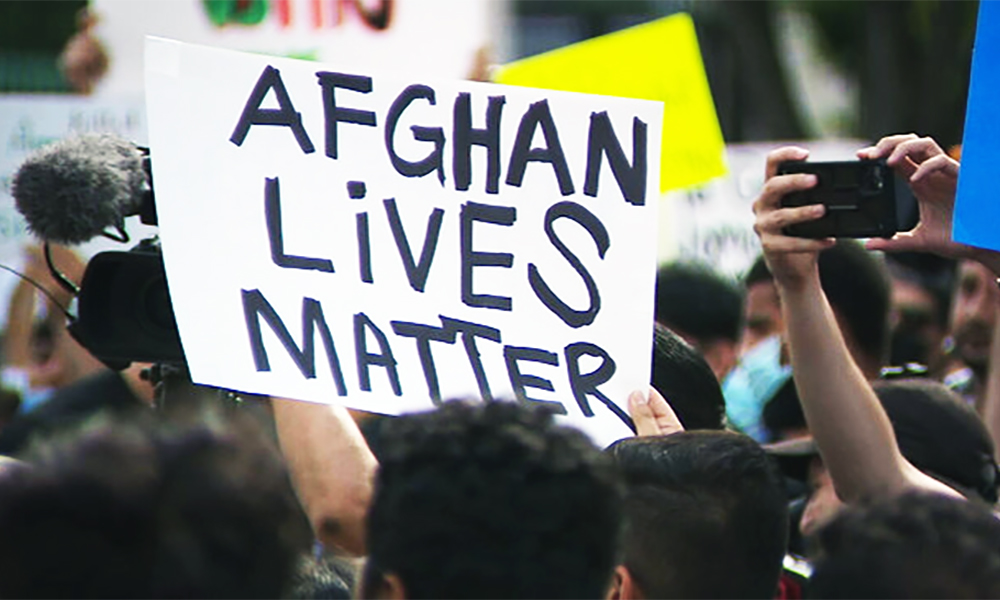
Considerable time and effort is being put into planning and hosting meetings between politicians on Afghanistan, where the focus is on security and the world’s need for the new Islamic Emirate of Afghanistan’s (IEA) interim government to tow the line.
Discussions are also held on conditions the IEA needs to meet on a myriad of issues, all while billions in foreign reserves held by the US remain frozen, as is monetary aid from donor countries, the World Bank and the IMF.
This strangulation of the economy is theoretical on paper and has clearly been politicized. In addition, the chances of the deciding politicians taking the real consequences into consideration appear to be elusive. Even interviews with current and former politicians and diplomats, conducted by foreign media, gloss over the real issue and focus on what’s in the past and what the West wants.
They focus on the West’s failure, on future expectations and clearly avoid the real story – the story of a humanitarian crisis unfolding before the world’s eyes.
One wonders if they are even hearing what the UN and other humanitarian organizations are saying. Are they cognizant of the warnings of a “looming humanitarian catastrophe”?
Just this week, a UN food envoy was quoted as saying the promised international aid to Afghanistan is not nearly enough to deal with the growing hunger sparked by drought and economic collapse after the IEA takeover.
Richard Trenchard, the UN’s Food and Agriculture Organization (FAO) envoy and director for Afghanistan, said Afghanistan was hit by a “massive, almost total economic implosion that’s occurred in the last two months”.
“The situation is deteriorating so quickly and so dramatically,” he said, and called for a “massive increase” in humanitarian assistance to Afghanistan.
The dire situation on the ground has led to a “terrifying” humanitarian crisis, he added.
These warnings have been growing over the past few weeks and keeping up with the latest data on acutely food insecure Afghans is becoming more difficult – as the figures shoot up constantly by millions.
But at face value, it doesn’t appear if these voices of concern are being heard.
So one wonders if the politicians and their egos are taking precedence over Afghans – innocent Afghans, who do not deserve this clearly dismissive treatment.
Just who does the world think they are punishing by freezing assets and holding back money? Do they not realize that they are not punishing the IEA, but instead they are making over 30 million Afghans pay the price for a failed war, a disastrous withdrawal of troops and years of backing a corrupt, failed government and president.
Hundreds of thousands of government workers, teachers, and healthcare workers have not been paid for three months. Hundreds of thousands more who were employed in the private sector have either not been paid or have lost their jobs as companies are either forced to close or struggle to keep going.
Millions more are directly affected by an economy that is collapsing. Commercial farmers are unable to sell their produce as customers have no cash, taxi drivers have very few clients, shops are empty of customers and once buzzing markets are now largely deserted, to name just a few.
Are these foreign politicians, who are holding Afghanistan’s purse strings, actually seeing this?
Are they thinking about the desperate parents wondering where they are going to get money to feed their children? And are they thinking about why these Afghans, who rely on weekly or monthly wages, are becoming increasingly more concerned about their immediate future.
What these politicians also probably don’t take into consideration is that the Afghan nation as a whole is not well off. They live just on, above or under the poverty line.
They mostly live in rustic mud houses, without piped water and only limited electricity. They do not live in comfortable houses, filled with cosy furniture, hot water on tap and fancy food on their dinner plates.
The conditions Afghans endured in the past were very different to what the West knows and now, with the economy stifled, conditions have shifted from bad to severe and are even worse for the millions who have been displaced to makeshift tent camps.
Contrary to general opinion around the world, Afghanistan is not just a sun-baked desert. Winter is severe. Temperatures plummet to well below zero across large swathes of the country, which also gets blanketed in snow and ice for months.
Even before this economic crisis, in winter’s past, poor Afghans would burn any fuel, including plastics, in a bid to stay warm. Central heating and double-glazed windows are non-existent.
So by depriving Afghans of basic access to cash through a regulated national economy, the West is actually passing down nothing less than a possible death sentence to millions.
Yes there is mistrust between the US and the IEA, but surely there are more threats of insecurity and terrorism emanating from within countries these days than there is from Afghanistan?
Is it not time to push the politics, and the wounded egos of having lost the war, aside and to now focus on helping the country constructively. Surely it’s time to prove to the IEA that the West will support them, that they won’t interfere in their internal affairs and will not bully them but rather stand by them to feed the nation, create jobs, and help rebuild Afghanistan.
Continuing along this path, of sheer resistance, is not helping anyone in Afghanistan – a nation that has suffered for decades at the hands of power hungry nations.
Now is the time for the world to show Afghans that they do have a heart; that they are not just war-mongers; that they are committed to helping them and that they don’t want to see millions plunged into the grips of poverty and starvation.
Latest News
Peace won’t be found in silence or fear, says AIHRC chair
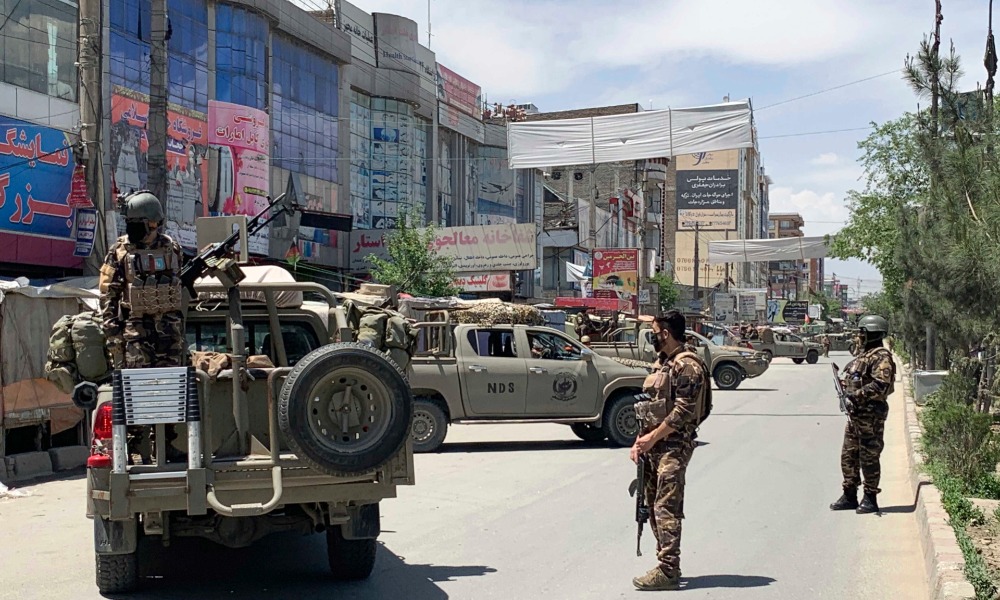
One year ago today – February 28 – Afghans were buoyed by the signing of the US-Taliban agreement in Doha, which they hoped would bring peace. Instead, today, a year later, targeted killings have spiked leaving thousands of civil society activists, government officials, journalists and even doctors fearing for their lives.
Shaharzad Akbar, the chair of the Afghanistan Independent Human Rights Commission (AIHRC), wrote in an op-ed piece, published in the Washington Post, that “every night, I lie awake wondering who will be next. I think of a colleague whose teenage son checks his car every morning for magnetic bombs. A husband saying goodbye to his wife as she leaves for work, wondering if today will be the day she is killed on her way to the office.”
She said that a year after the deal was signed, instead of ushering in peace “one of the most tangible changes has been an increase in targeted killings, mostly unclaimed, that have created an environment of terror and fear.
“There were nearly three times the number of such attacks in 2020 compared with 2019; the casualties include the deaths of 11 human rights defenders and media workers in the past five months,” she wrote.
Akbar pointed out that some of Afghanistan’s most important gains, its activists, community leaders and scholars, are being silenced at a time when, after the US-Taliban deal, Afghans had hoped for a reduction in violence and for inclusive intra-Afghan negotiations.
“While the Taliban denies involvement in most targeted attacks, it benefits from the environment of fear and hopelessness around the peace process and the lack of critical voices demanding an inclusive peace.
“This reign of terror for Afghan civilians must end in order for a real peace process to begin,” Akbar wrote.
She also pointed out that as the United States reviews its Afghanistan policy, it still has leverage — including the existing UN sanctions on the Taliban, the Taliban’s desire for international recognition and legitimacy, and the presence of international forces in Afghanistan — to help stop these attacks and encourage a ceasefire and an inclusive peace process.
She stated that her AIHRC colleagues know what it is to feel terror as the organization has lost three of its staff members in the past 18 months.
Akbar pointed out that these high levels of violence are forcing families to flee the country.
“Every day I hear of another friend, journalist, academic, women’s rights activist or businessperson leaving the country. Their departures are creating an absence that will take another generation to fill. Those who can’t leave feel silenced by fear and have little chance of influencing the peace process,” she wrote.
Akbar also noted that it has been years since the last mass demonstration by Afghans – “for fear of attacks”.
She also said that following the recent wave of assassinations, public debate has closed down, even in the virtual sphere. “This is even more true beyond Kabul, in rural areas where conflict has been the most savage.”
Akbar stated that while US President Joe Biden’s team has signaled that it will withdraw its last troops as per the agreement with the Taliban, if the group reduces violence. she said: “This is welcome but not enough. Even with overall violence levels down, targeted killings are silencing the voices needed to build pressure for peace.”
“The United States does not want Afghanistan to collapse into a catastrophic civil war as soon as it withdraws, after 20 years of assistance. But the narrow focus of the US-Taliban deal ignored the wider needs of the peace process, including the importance of civic space and the protection of civilians. This approach should be urgently reconsidered in Biden’s review,” she said.
Akbar stated that public participation is not a bonus that is “nice to have” but rather an inclusive process that builds momentum for peace and boosts the credibility of the process.
Bringing traditional and nontraditional civil society voices to the table from across Afghanistan will bring a sense of urgency and bottom-up pressure on the parties.
She also stated that public participation can best be guaranteed through a ceasefire and that the US and its allies should utilize their leverage with both sides and the region to continue to push for an interim and immediate ceasefire that will create an opportunity for national engagement.
“An immediate end to targeted killings, a ceasefire and the restoration of civic space will allow for broader inclusion in the talks, reviving hope and confidence in the process,” she said.
Akbar stated that the US can encourage the Taliban and the Afghan government to create this enabling environment for peace. Afghans could then force hope back onto the table.
“We will not find peace in silence and fear,” Akbar stated.
-

 Sport4 days ago
Sport4 days agoOlympics finally here; What you need to know
-
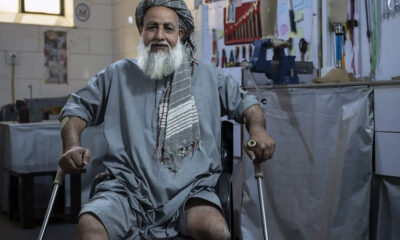
 Latest News5 days ago
Latest News5 days agoOCHA reports 110 die in landmine explosions in Afghanistan every month
-
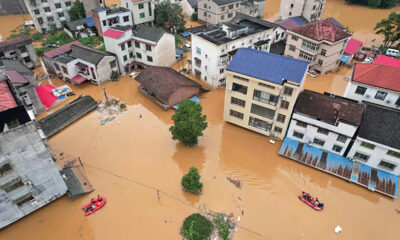
 Regional5 days ago
Regional5 days agoChina braces for twin tropical cyclones after deadly flash floods
-

 World5 days ago
World5 days agoBiden ends failing reelection campaign, backs Harris as nominee
-
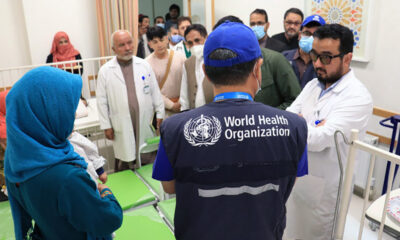
 Health4 days ago
Health4 days agoHealth partners provide services 589,205 people in Afghanistan in last month
-

 Latest News4 days ago
Latest News4 days agoAfghanistan’s Hajj ministry confirms death of 27 pilgrims in Mecca and Medina
-
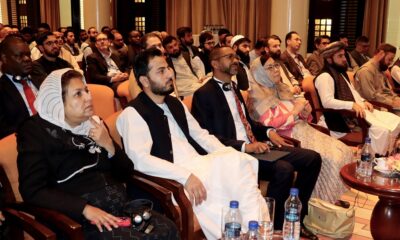
 Business5 days ago
Business5 days agoConference on Islamic microfinance kicks off in Kabul
-
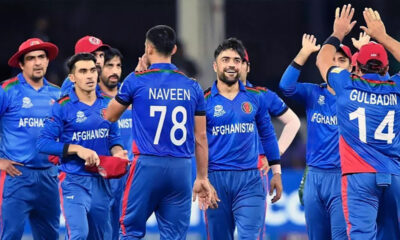
 Sport4 days ago
Sport4 days agoACB proposes ODI fixtures against top-tiered teams





